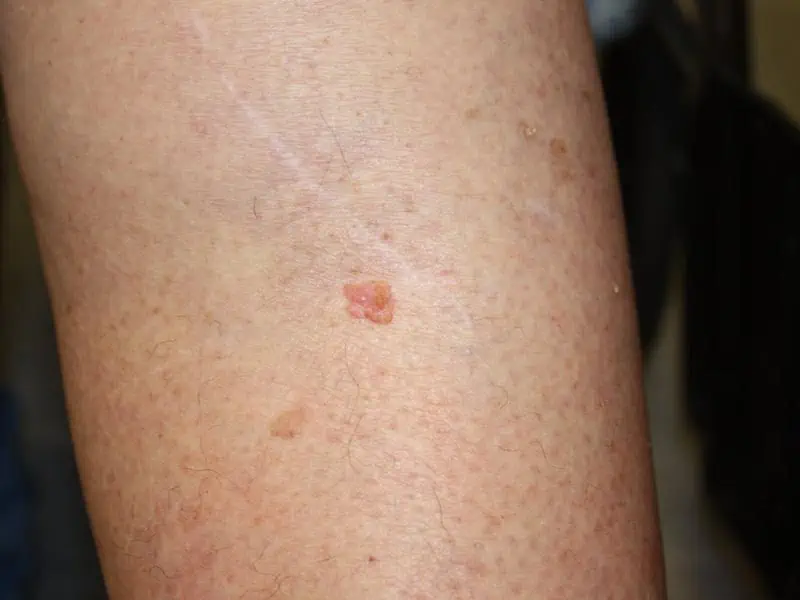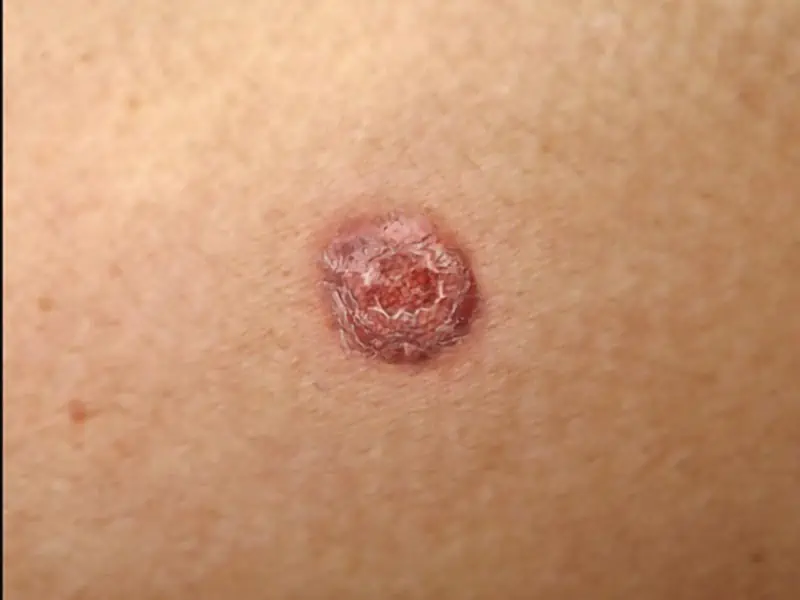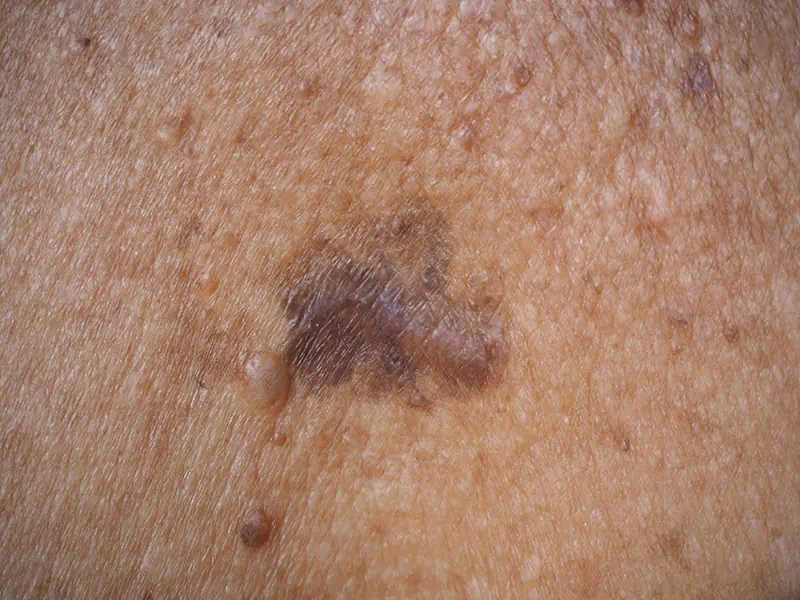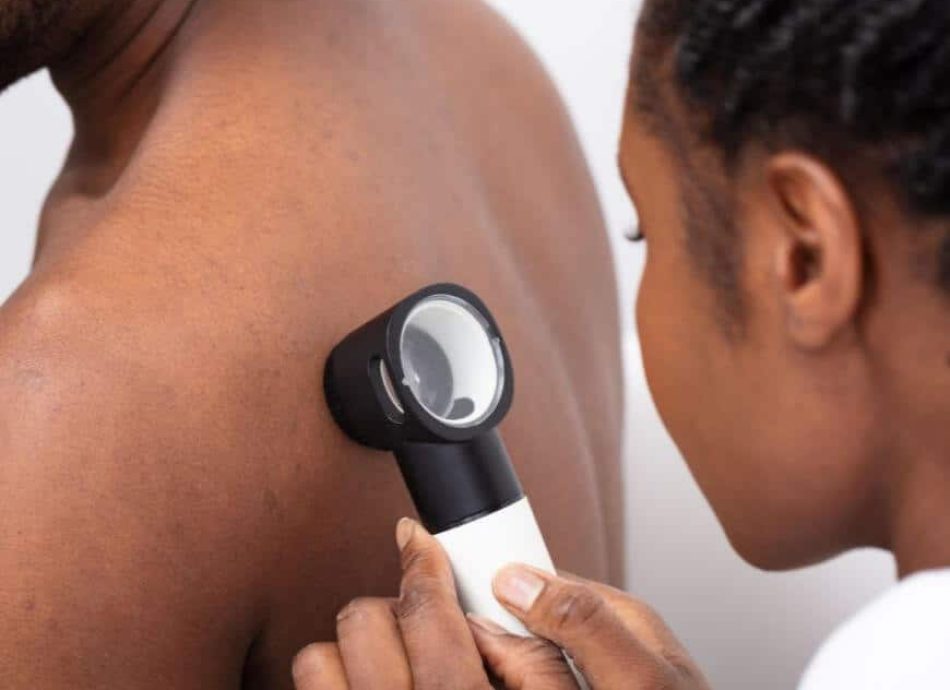Award winning dermatology service, with over 20 years on experience
Short waiting lists, on some occasions offering same week appointments
Safe environment, in Care Quality Commission approved facilities
Skin Cancer Treatments Include:
skin cancer check manchester
Did you know that skin cancer is the most common form of cancer, with the rates continuing to rise year after year? Over 100,000 new cases are now diagnosed each year, and melanoma, the most aggressive subtype kills over 2,500 people each year in the UK – that’s seven people every day. Additionally, there has been a 70% increase in Melanoma cases among 25-49 year olds. While there’s more awareness on preventing the disease, many people still aren’t sure of the signs and symptoms to look out for.
Cancer starts when cells in the body begin to grow out of control. Any cells in any part of the body can become cancerous, and can then spread to other areas of the body. When it comes to skin cancer, there are two main categories- melanoma and non-melanoma.
WHAT CAUSES SKIN CANCER?
Exposure to sunlight is the most well known cause of skin cancer. The number of cases of skin cancer is on the rise, despite years of warning against excessive tanning and the dangers of sunbeds. People with paler skin (Fitzpatrick skin types 1-3) are at a higher risk of developing skin cancer as they are more vulnerable to damage from the sun’s ultraviolet (UV) rays.
You are also at an increased risk of skin cancer (melanoma), if you have a large number of moles. It is important to monitor any unusual shaped moles which are over 5mm. If you have concerns about a mole on your body, book in a mole check with one of our experienced consultants.
UNDERSTANDING SKIN CANCER
These two cancer types relate to the different cells in our skin. The top layer of our skin (the epidermis) is home to 3 main types of cells:
Squamous Cells – These are flat cells in the outer part of the epidermis that are constantly shed as new cells form.
Basal Cells – These cells are in the lower part of the epidermis, called the basal cell layer. These cells constantly divide to form new cells to replace the squamous cells that wear off the skin’s surface. As these cells move up in the epidermis, they get flatter, eventually becoming squamous cells.
Melanocytes – These are the cells that can become melanoma. They make a brown pigment called melanin, which gives the skin its tan or brown colour. Melanin protects the deeper layers of the skin from some of the harmful effects of the sun. For most people, when skin is exposed to the sun, melanocytes make more of the pigment, causing the skin to tan or darken.
MELANOMA
Melanomas, also known as ‘malignant melanoma’ and is less common than non-melanoma cancers, but it’s also the most dangerous of the two. Skin cancers that are not melanomas are often grouped as non-melanoma skin cancers because they develop from skin cells other than melanocytes. They tend to behave very differently from melanomas and are often treated with different methods. Basal cell and squamous cell cancers are by far the most common skin cancers, and actually are more common than any other form of cancer. Because Basal cell carcinomas are slow growing and rarely spread (metastasize) to other parts of the body, they are often diagnosed late. Squamous cell carcinomas on the other hand can grow rapidly and can spread, hence the urgency for treatment.
NON-MELANOMA
Non-melanoma skin cancers are mainly made up of ‘Basal Cell Carcinoma’ (BCC) and ‘Squamous Cell Carcinoma’ (SCC). Skin cancers that are not melanomas are often grouped as non-melanoma skin cancers because they develop from skin cells other than melanocytes. They tend to behave very differently from melanomas and are often treated with different methods. Basal cell and squamous cell cancers are by far the most common skin cancers, and actually are more common than any other form of cancer. Because Basal cell carcinomas are slow growing and rarely spread (metastasize) to other parts of the body, they are often diagnosed late. Squamous cell carcinomas, on the other hand, can grow rapidly and can spread, hence the urgency for treatment.





SKIN CANCER SIGNS AND SYMPTOMS
Basal and squamous cell skin cancers (non-melanoma) are much more common than melanoma. They usually appear on areas that get the most sun such as the face, neck and head, but they can show up anywhere on the body. The most obvious signs of Basal and squamous cell skin cancers and the things to look out for are:
- Flat, firm, pale or yellow areas, similar to a scar
- Raised reddish patches that might be itchy
- Small, pink or red, translucent, shiny, pearly bumps, which might have blue, brown, or black areas
- Pink growths with raised edges and a lower area in their centre, which might contain abnormal blood vessels spreading out like the spokes of a wheel
- Open sores (which may have oozing or crusted areas) that don’t heal, or that heal and then come back
- Rough or scaly red patches, which might crust or bleed
- Raised growths or lumps, sometimes with a lower area in the centre
- Wart-like growths
It’s important to note that skin cancer can affect everyone differently and the appearance of moles or the descriptions seen here can differ, other skin changes to keep an eye out for include:
- New spots or skin lesions
- Spots that differs in appearance to others on your body
- Any sore that doesn’t heal
- Redness or swelling beyond the border of a mole
- Itching, pain or tenderness of the skin
- Oozing, scaliness or bleeding on the skin
If you’re concerned about the appearance of anything on your skin, please contact us for a consultation where we can identify, diagnose and excise any suspicious moles, but most importantly, give you peace of mind from a dermatologist you can trust.
KNOW YOUR RISK OF SKIN CANCER
Most people know that getting sunburn increases the chances of getting skin cancer. But there are other things that increase your risk too, including if you:
- use a sun bed
- have fair hair and eyes, lots of freckles or pale skin that burns easily
- have lots of moles – more than 11 moles on your right arm means you’re
- likely to have more than 100 moles on your whole body
- have large moles bigger than 6mm
- have had a melanoma before, or if a close relative has had one
- are taking medicines that affect your immune system
For those who have only a few moles and low risk of melanoma (no personal or family history of melanoma, no history of sun-bed use or excessive sun exposure, dark skin) a self-skin examination once every few months would suffice.
On the other hand, patients who have the atypical naevus syndrome, previous history of skin cancer/s, strong family history of skin cancers, fair skin, suppressed immunity or history of excessive sun exposure, we recommend once monthly self-skin examination. Good quality digital pictures of the moles should be taken at baseline.
HOW CAN SKIN CANCER BE TREATED?
The treatment you are offered will depend on the type of skin cancer you have, the location of the lesion and how developed it is. You will be required to attend a consultation with a consultant dermatologist who will assess your skin and advise on the best course of treatment. Common Skin Cancer treatments include:
- Micrographic Surgery (MOHS)
- Surgical excision
- Curettage and electrocautery
- Cryotherapy
- Anti-Cancer Creams
- Photodynamic Therapy (PDT)
If it is identified that you do have skin cancer and treatment is needed, the Harley Street Dermatology clinic offers a range of treatment options which will be discussed with you during your consultation. Skin cancer can be removed surgically under local anaesthetic with the most common dermatological surgeries to treat skin cancer being MOHS, Excision, and Curretage and Electrocautery. There are also a number of non-surgical skin cancer treatments on offer, these include photodynamic therapy, topical creams and Cryotherapy.
CHECKING YOUR MOLES FOR SIGNS OF SKIN CANCER
Spotting the warning signs of skin cancer early can make it more easily treatable. The best way to identify skin cancers is to understand your moles on your body. Doctors advise that you check your skin carefully at home about once a month to identify any changes. A good way of self-checking your skin will be using the “ABCDE” rule to look for some of the common signs of skin cancer.
Checking your moles should be a high priority when checking your skin, as well as looking for any changes to your skin or the appearance of new markings. If you’re worried about the appearance of a mole but still unsure how to check it, take a look at our mole mapping service. We can perform a full body mole mapping service to give you peace of mind.
DIAGNOSING SKIN CANCER
If you have any of the alarming signs, you should seek advice from your GP who can refer you to a dermatologist. Any suspicious mole should be examined by a dermatologist who would undertake a full-body skin examination and a dermatoscopic examination of the moles to look for signs of melanoma.
At Everything Skin Clinic™ our expert Dermatologists are trained to use these handheld illuminated magnifiers — dermatoscopes which highlight specific signs of melanoma which may not be apparent to the untrained eyes. We also undertake Mole mapping in our ‘Mole Map Clinic’ using then most sophisticated state of the art, ATBM, Fotofinder mole mapping machine.
FREQUENTLY ASKED QUESTIONS
IS SKIN CANCER HEREDITARY?
Skin cancer is not hereditary in the sense that it is passed down through a gene. However, skin type does run in families so those more likely to develop skin cancer are often in the same family.
WHO IS MOST AT RISK OF GETTING SKIN CANCER?
Men are more likely than women to develop skin cancer and it is more common in the elderly.
WHAT FACTOR SUN CREAM SHOULD I USE?
It is recommended to use a high factor of sunscreen no matter your skin type. SPF30 with a 4-star UVA rating during the summer is recommended for those with paler skin to stop burning but also to help prevent wrinkles and sunspots in those who don’t burn as easily.
DO SUNBEDS CAUSE SKIN CANCER?
Research shows sun beds are a significant risk factor in skin cancer.
HOW CAN I PREVENT DEVELOPING SKIN CANCER?
Protecting your skin is, of course, always the best course of action. The easiest ways you can do this include:
- Wearing a waterproof, high level of SPF protection when in the sun
- Use a daily moisturiser with SPF protection
- Avoid the sun when it is at its strongest during the day
- Wear a hat when in the sun
- Sit in the shade
REQUEST A CALL BACK
Please fill in this form and one of our team will give you a call back to arrange a consultation with one of our expert dermatologists.
"*" indicates required fields

HEAR FROM OUR PATIENTS
WHY TREAT YOUR SKIN CANCER AT EVERYTHING SKIN CLINIC?
At Everything Skin Clinic™, we have a team of highly trained Consultant dermatologists, who have completed specialist training in Dermatology and are on the specialist register of the General Medical Council. All our consultants hold substantive contracts with the best Dermatology centres in leading NHS hospitals. Therefore, you can be certain of the highest quality private care.
We offer a range of treatments and can offer one, or a combination of treatments to achieve the best results. Unlike many other clinics, we can offer diagnosis and treatment all under one roof by expert consultant dermatologist, so you know you’ll be in safe hands.
INSIGHTS AND ADVICE

Eczema Awareness Month – Your Eczema Guide
October serves as Eczema Awareness Month. For those of you dealing with eczema, you’ll know the challenge of managing this skin condition all too well. Our commitment throughout October and always, is to enlighten, support and empower you by sharing invaluable insights about its origin,

Demystifying Varicose Veins: Identifying, Controlling And Avoiding
Varicose Disease Awareness Month is dedicated to raising awareness about a common yet often overlooked condition affecting millions worldwide —varicose veins. Throughout September, we aim to shed light on the importance of early detection, treatment options and lifestyle adjustments to manage varicose veins effectively. By

Unveiling the Mysteries of Psoriasis: The Heart of Psoriasis Awareness Month
Every August marks a significant period – Psoriasis Awareness Month. It aims to boost global comprehension of psoriasis, a long-lasting skin disorder impacting numerous lives worldwide. The campaign is dedicated to debunking misconceptions about the disease, promoting early diagnosis and advocating for effective treatment approaches.

